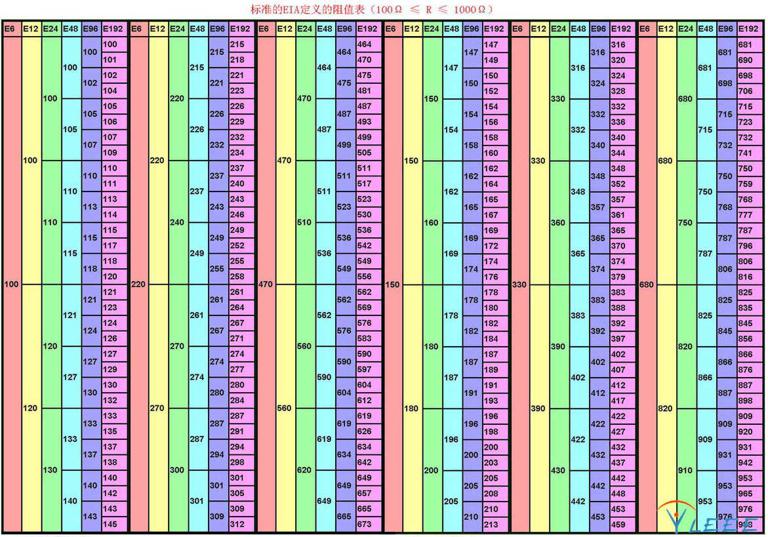Standard Resistance Resistance Quick Reference Table_Online Tools
Standard resistance resistance quick reference table
The American Electronics Industry Association defines a standard resistance value system (in fact, the system is also applicable to capacitors and inductors). This system was defined in the last century. At that time, the resistors were all carbon film processes with very low precision. In order to understand the resistance value system, if the first resistor value is 100Ω, it is not necessary to do 105Ω because the 100Ω resistor accuracy is 90 to 110Ω, so the second meaningful resistance value. It is 120Ω and its resistance accuracy ranges from 110Ω to 130Ω. In this way, the resistance values from 100 Ω to 1000 Ω are 100, 120, 150, 180, 220, 270, 330, etc., which is the resistance value of the E12 series defined by EIA.
EIA defines the resistance values of several series of precision values, which are E3 E6 E12 E24 E48 E96 E192, and the numbers after E represent several resistance values from 100 to 1000. Other resistance values are obtained by exponential multiplication and division of 10, such as 4.7Ω, 4.7KΩ, etc. The accuracy definitions and values for all series are as follows:
E6 20% accuracy (rarely used now)
E12 10% accuracy
E24 5% accuracy
E48 2% accuracy
E96 1% accuracy
E192 0.5%, 0.25%, 0.1% and higher precision
The basic resistance values in the table below can be multiplied by the magnification to obtain other resistance series.
